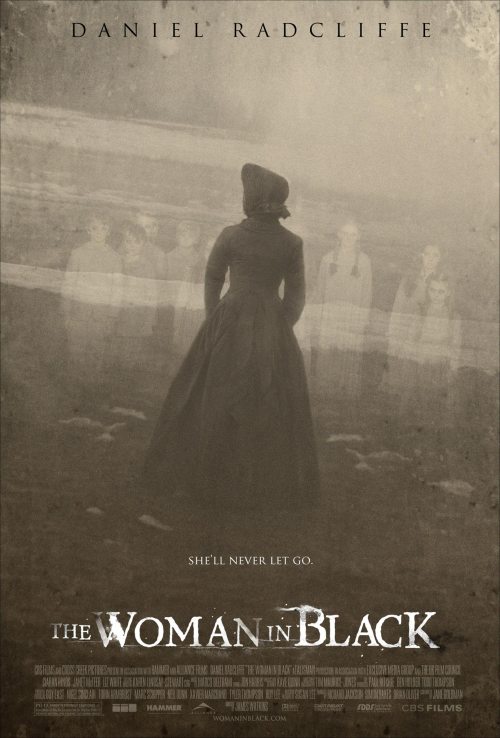So this isn’t particularly the way I would want to write this review, I’d like to do it with a bit more opinion and a bit more attitude (a.k.a: vulgarity) but it was for Uni so I had to stick to their rubric rigidly!
Harry Potter and the Deathly Hallows: Part Two
To produce an effective review of a film adapted from a book there are certain aspects to consider. Two of the central points are the degree to which the film stays loyal to the book and how this affects the outcome of the end product and its quality as a film. It is my opinion that the final instalment of the blockbuster “Harry Potter” series, directed by David Yates and based on the books by J.K. Rowling, is a poor display of both aspects despite its general success and positive reception from fans and critics alike.
A key factor to consider when discussing the adaptation of Harry Potter and the Deathly Hallows Part Two is the fidelity of said adaptation, and the reasons behind the choices made that deviate from the original novel. The alterations within this adaptation may be split into certain categories and possible reasons behind the choices made I can account for, yet, I feel they are still to the film’s detriment.
The first reason for the film’s lack of fidelity is the transition of medium from book to film. This has never proven to be a simple journey and one that rarely is successful which is proven in this adaptation. The foremost reason for this is that when concerning films, one is presented with the issue of running time, which is quite a crucial limit that is absolutely devoid from literature. Therefore it is not only understandable but imperative to edit sections of the original book and either alter or eradicate the sections that are least instrumental in the direction of the film. This is however in my opinion, poorly advised in the film and certainly acts as one of its major downfalls. Examples of this such as the characterisation and plot deviations within the film undoubtedly are due to this. However, the issue that I present here is that they present a direct threat to the quality of the film and are unwisely chosen to be removed compared to more visually entertaining or crowd-pleasing scenes. An accurate example of this is at the beginning of the narrative. Harry is talking to Griphook the goblin and discussing the favour he requires from him. Griphook inquires where Harry procured the sword of Godric Gryffindor to which Harry shrugs the question off, eliminating any explanation that could be needed for viewers unfamiliar with the story or previous films. This is echoed in Phillip French’s review in The Observer:
“How did you come by the sword?”, referring to the Excalibur-like weapon retrieved from the bottom of a lake in The Deathly Hallows: Part 1. “It’s complicated,” replies a desperately tired, unwashed Harry, who rapidly dispenses with anything that might be described as a synopsis of preceding events, leaving people who don’t know their Horcruxes from their Dementors to muggle through. (French)
The characterisation is as severely altercated as the plot and is ultimately due to the medium and its restraints. Poorly adapted characters can be seen in the form of Harry himself, Voldemort, Dumbledore, Hagrid and a long list of others. Key attributes of their personalities are either poorly translated or ignored completely within the film, supposedly due to the restraints of running time. In particular is the character of Hagrid. As a main and integral character, it is strange to me that he is absent from the majority of the film, when the book features him predominantly. The vitality of characterisation is so the audience may identify with the characters and build up an understanding of their actions and behaviour. This is nearly irrevocably lost in the film and severely damages its quality. Without a strong bond between character and viewer there is no concern for the character’s safety and in a type of storyline, like the one in question, this is vital. The lack of characterisation causes there to be a lack of emotive response from the viewer. An example of this is the many deaths that occur within the narrative that pass without an excessive amount of grief from its viewer. This is the opposite reaction to the book, where instead of feeling as if someone close to them had been killed, one is left with the feeling of indifference. This is something which I for one am certain was not the intended response.
On the other hand, film as a medium does have its advantages against the book in some ways. Worth mentioning is the fact that it is one hundred percent visual as it can employ techniques such Computer Generated Images (CGI) to bring the magic, quite literally in this case, to life. When compared to literature one can identify that Rowling, who is limited to using her command of language to illustrate the vision for the reader, did not have this benefit. However in a film wherein the special effects and CGI have the budget and a real opportunity to flourish and rescue the film it does not seem to quite manage that either. A scene that is most memorable for this would be the part where Harry, Ron and Hermione are racing for their lives on broomsticks away from the ‘FiendFyre’; a fire created by dark magic that resembles fiery, mythological beasts and that destroys everything in its path. Once again viewers were disappointed, as the CGI employed in this scene did not only quite plainly resemble CGI but CGI that was being used seven years ago.
A second explanation for the choices concerning the films fidelity is that of its target audience. Despite the books being thoroughly enjoyed by all ages it is predominantly a children’s novel and this could not be truer in respect for the film. Being a children’s film, there are certain scenes that to depict visually and explicitly would incur the BBFC rating of the film to rise, allowing only an audience of mid-teenagers and above to view it. As a children’s film this is not possible, and despite the fact that the film would have, in my opinion, been far deeper, hard-hitting and emotionally successful, it would have excluded its target audience. An example where this factor could have been in mind when making directive selections could be the scene in Gringotts bank, where the treasure in the vault merely duplicates rather than additionally becoming blistering and smouldering as it is in the book. The viewing of three teenagers drowning and suffocating under scorching hot metal by children is clearly one that could distress. It is interesting to note, conversely, that on the children’s edition of the book the front cover actually depicts them in the burning metal, with clear signs of scorching on their skin. There seems to be a constant attempt throughout the film to create a dark and raw adventure film balanced with a light-hearted children’s film that is not succeeded. By making a decisive move in one direction the film would have been much more of success in either category. However, that would have cut down on its wide appeal and, ergo, cut down on its profit.
Another example of the film’s unfaithfulness to the novel can be witnessed through the sligthly cheapening moments throughout the film. Numerous examples are seen at the final phase of the film, for example certain lines from characters such as Professor McGonagall played by renowned actress Maggie Smith. After a well-delivered line from the book and surrounding a very nicely shot scene, the characteristically strict and severe teacher admits a girl-like giggle and proclaims that; ‘I’ve always wanted to use that spell!’ This choice of basic humour not only destroys the character of McGonagall but also destroys the desperately sought after foreboding and thrilling tone that the film so badly requires yet, so frequently, relinquishes. This one of several examples of the unbecoming tone and cheapening of the movie, yet it is it is not the acting that causes these issues. The film is rich in acting with only minor disappointments; it is the adaptation that causes these moments to appear so cheap and lifeless.
A further display of infidelity that undermines the film’s quality is the display of poor continuity that must surely be down to differing judgement. The prolonged fight between Voldemort and Harry for example, which has previously been declared in the film and books as impossible. Snape’s death scene being needlessly in a completely different location also certainly falls into this category. They display lack of continuity and alterations to the original plot for the mere sake of doing so. Something that I feel is worth noting for continuity failure is that in the final phase of the film, the character Gregory Goyle is now both a totally different actor and race to the previous films. Choices like this are amongst many that leave one confused to say the least.
Perhaps more understandable deviations from the original novel applied in the adaptation, are that of the movements away from a considerable amount of the themes and symbolism within the book. Critics and fans have often been heard to identify religious symbolism within the series, most commonly associated with Christianity and the New Testament of the Bible. It is perhaps understandable therefore why the direction of the film is to remain more neutral on this topic to, once again, remain appealing to a wider audience and eliminate the risk of offence. This could then explain the hasty progression through the scene where, in the book, Harry theoretically rises from the death of a martyr.
In conclusion, it is due to the varied reasons that I have stated in this review that as an adaptation, Harry Potter and the Deathly Hallows Part Two fails to be wholly accurate and that its infidelity is to its detriment, not just in its quality as an adaptation, but as a film also.
Word Count: 1634
Bibliography
Read Full Post »


